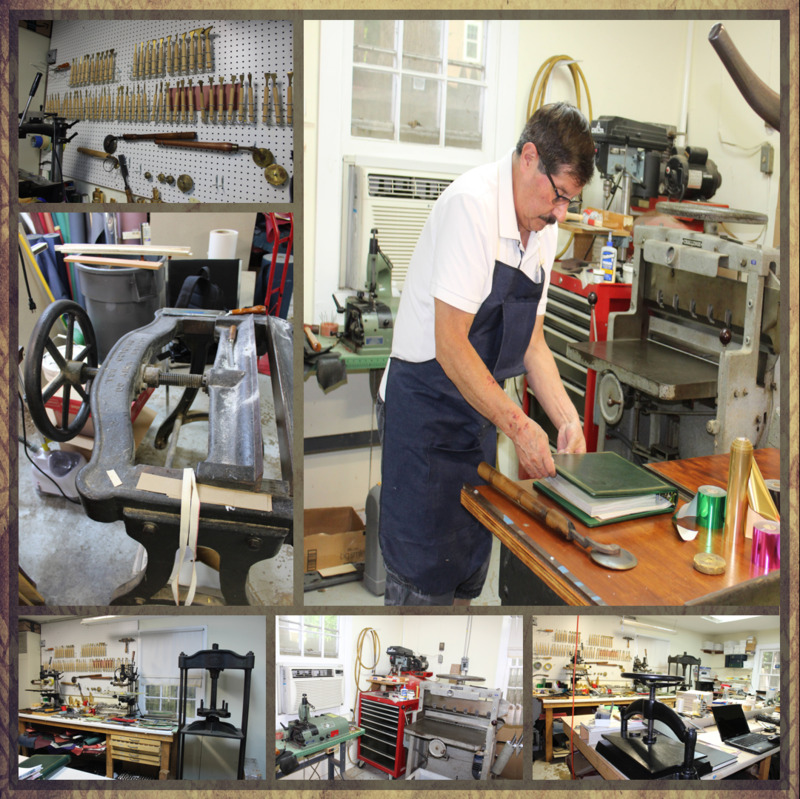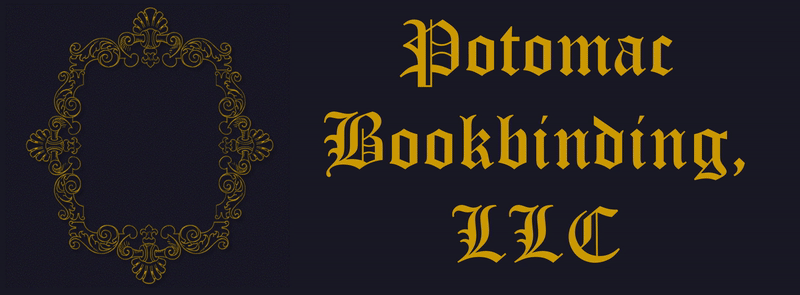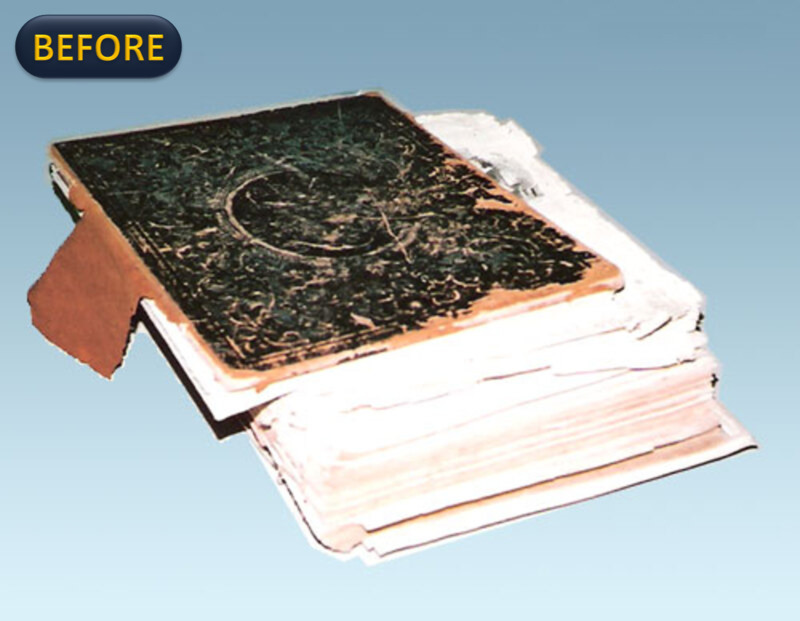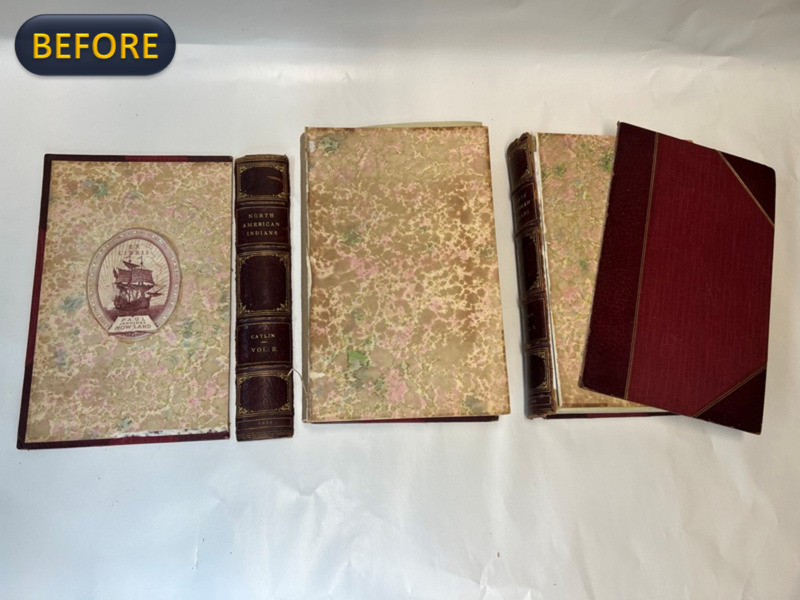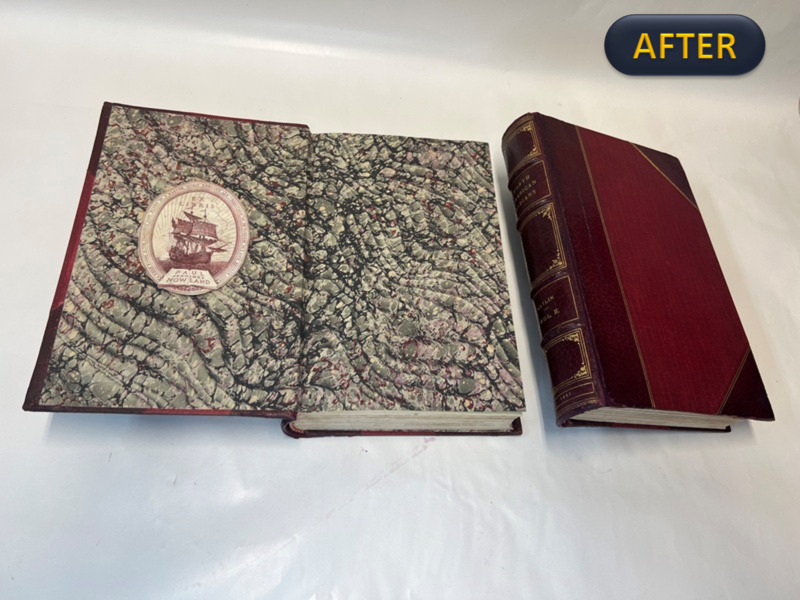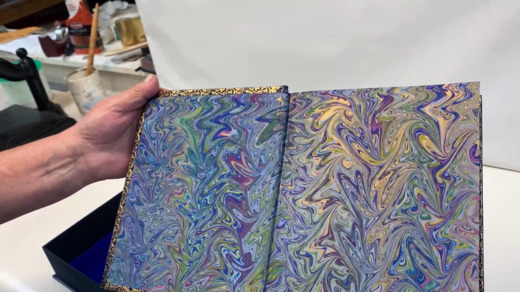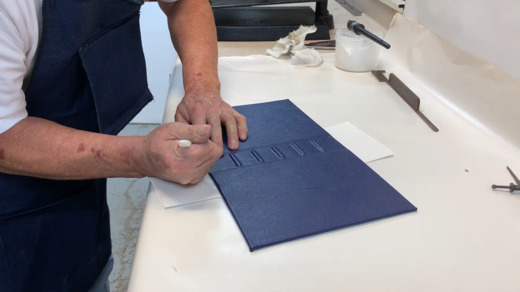RESTORATION & CONSERVATION
BOOKBINDING RESTORATION & CONSERVATION
The need for Conservation and Repair of library materials is determined by their Physical and Chemical Composition the environment in which they are stored, and their history of use and abuse.The composition and Structure of a book along with the permanence and durability of its component materials significantly affect the need for later conservation treatment. If a book printed on poor quality paper is rarely used, the paper may deteriorate faster. The techniques applied to preserve a book, printed in acidic paper depends on how deteriorated it is. Acids are the primary cause of the paper to become brittle, dark and weak. It is considered brittle when the corner of the page breaks away after a few folds or do not turn without breaking. Acids are the first cause of the deterioration of the paper. This destroy cellulose fiber in a substantial degradation.
The speed of chemicals reactions is directly related to the temperature: therefore, the rate of the deterioration of mate-rials is accelerated in a higher temperature. Paper and other book materials are hygroscopic and absorb or lose water from their surroundings. High humidity causes loss of strength due to embrittlement. Quick changes in humidity hasten the movement of deteriorative materials within the paper from sheet to sheet, and cause books structures that absorb humidity at different rates to break down.
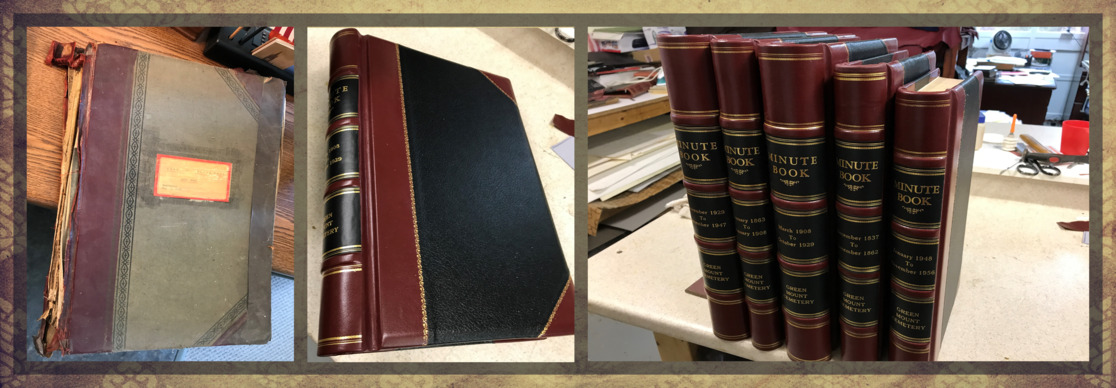
BEFORE AND AFTER
Most books and documents printed or bound before 1870 can be restored with excellent results. This is possible because the original materials were more durable than those used in following years. The paper was of high quality, frequently made of linen and cotton fibers. That combination allows the paper to be safely washed and deacidified. Texts from this period were well sewn? and the leather was properly tanned and durable.
However at the beginning of this century, the demand for books became so great that wood pulp paper and poorly tan-ned leathers were substituted. These materials, reacting with humidity and atmospheric pollution, form strong acids that caused paper to become brittle and leather to turn to powder.For that reason, books and documents published between 1880 and 1920 must be treated as soon as possible.
When restoring volumes published after 1880. Mr. Sanabria deacidifies the pulp-based paper. Chipped and torn areas then are mended with non-acidic, archival tissues. Deteriorated leather and brittle cloth are replaced and new gold le-ttering is applied.
We have learned much from the past. Today the materials used by Mr. Sanabria and his staff are of archival quality. Acid-free and alkaline-buffered paper, unbleached linen book clothes, acid-resisting leather, and flexible adhesives ensure that restoration will last for 200 to 300 years.
DELUXE LEATHER BINDING




ABOUT US
BOOKBINDING RESTORATION & CONSERVATION
Mr. Sanabria's recognition in the field document restoration and conservation is a result of his expert workmanship and dedication.
The inspiration of Mr. Sanabria's interes in bookbinding came from his parents Armando and Cristina Sanabria.
Mr. and Mrs. Sanabria served a diverse clientele in La Paz - Bolivia since 1938 in their workshop "Sanabria's Graphic Workshop" (Talleres Gráficos Sanabria).
Mr. Sanabria started to learned the craft and served his apprenticeship under his parents supervision, just when he was 10 years old.
When he came to United States, in 1975, Mr. Sanabria started to work for a several bookbinding and restoration shops in Washington Metropolitan area. He worked as a supervisor or head bindery.
